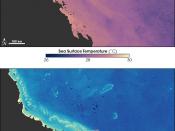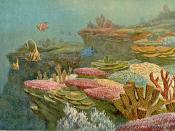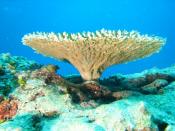The phenomenon of coral bleaching has affected extensive reef areas across the pacific. Coral bleaching was first described by Glynn in 1984. Since that date, coral bleaching has occurred in the Caribbean, Indian, and Pacific oceans and on a regular basis. Repeated bleaching is also a common feature at many sites throughout the Caribbean and Indian Ocean. Although the 1990's have seen recurring bleaching in some places, minor bleaching has been reported on reefs elsewhere for the first time in recent history. These places include Mexico and Belize in 1995 and reefs in Milne Bay, Papua New Guinea, and Hawaii in 1996.
Definitions
Coral- A hard red, pink, or white substance formed by the skeletons of tiny sea creatures massed together.
Bleach/Bleaching- Make or become white.
Corals are made by millions of tiny carnivorous animals. Those animals are called polyps and they live in colonies. When the polyp has died it forms a foundation for another polyp, when there limestone foundations increase they are called a coral reef.
Coral reefs are found in shallow, tropical waters along the shores of islands and continents. Corals live in very nutrient poor waters and have certain zones of tolerance to water temperature, salinity, UV radiation, and nutrient qualities.
Coral polyps benefit from photosynthate but the rate of photosynthetic production is too high. Coral has the ability to control the amount of zooxanthellae in their tissues by expelling it; this process is normal and is called coral bleaching. "However, when corals are immoderately stressed, this causes them to expel more zooxanthellae than necessary, and therefore loss of colour results from the expulsion of too much zooxanthellae, and/or the concentration of photosynthetic pigments in these organisms are diminished"(www.marinebiology.org)
Long term bleaching can cause the partial or total death of coral colonies, but if the...


